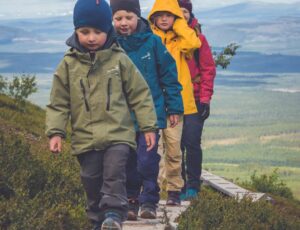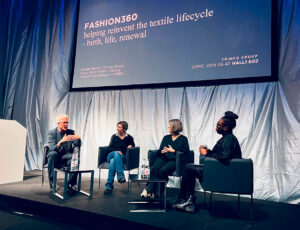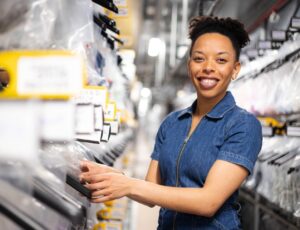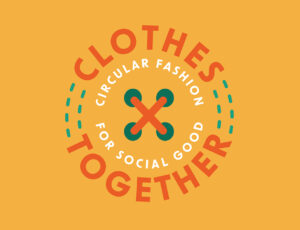
The largest study into clothing habits ever undertaken by climate action NGO WRAP shows changes over the last eight years around how long we retain our clothes. Also, how our openness to new ways of clothes ‘shopping’ could significantly reduce the environmental cost of clothing the nation.
Between 2013 and 2021, the predicted length of time people in the UK kept a range of clothes increased. Today, non-padded coats and jackets have the longest lifespans at more than six years apiece. Jeans are now kept for an average of four years, compared to just three years in 2013.
Furthermore, those buying preloved and second-hand vintage tend to keep these items longer than those purchased new. If someone repairs an item of clothing, they typically keep it for a further 1.3 years.
Commenting is Catherine David, director of collaboration and change at WRAP
“The clothing and textiles sector has the fourth largest environmental impact on the planet. That’s why WRAP is working with the UK’s biggest retailers and brands to address this through the ambitious targets of Textiles 2030. Many people are already buying and selling pre-loved clothing, but our study shows the huge financial and environmental opportunity that is unworn in all our wardrobes.
“Textiles 2030 signatories are already beginning to introduce resale and rental business models. But these, alongside repair models, must become widespread if the fashion industry is to begin to achieve the reductions in greenhouse gas emissions necessary to limit global warming to 1.5 degrees.”
Clothing Longevity and Circular Business Models Receptivity in the UK report
A two-part report by the climate action NGO WRAP called Clothing Longevity and Circular Business Models Receptivity in the UK examines the UK’s attitudes to clothing. Also, a keenness to adopt new forms of acquisition through the market of circular business models.
These include clothing subscription services; rental (pay-per-wear); preloved (resale); upcycled, and repair (where a brand repairs an item of clothing a customer has purchased from it for a fee). WRAP found two in five people (40%) are likely to use a subscription service. Three in five (58%) are also open to using a repair service.
Among those who have already used a ‘circular business model’, the majority said they would do so again, with young people and high frequency/spend shoppers most likely to have engaged already, and most receptive.
Examples of circular business models include John Lewis Partnership teaming with children’s rental subscription service The Little Loop
These are supported by established and highly used examples including the charity retail sector and existing business-to-consumer and peer-to-peer resale services and marketplaces. WRAP’s research confirms a clear case and mainstream potential market for brands and retailers to implement circular business models and increase the utilisation of clothing.












